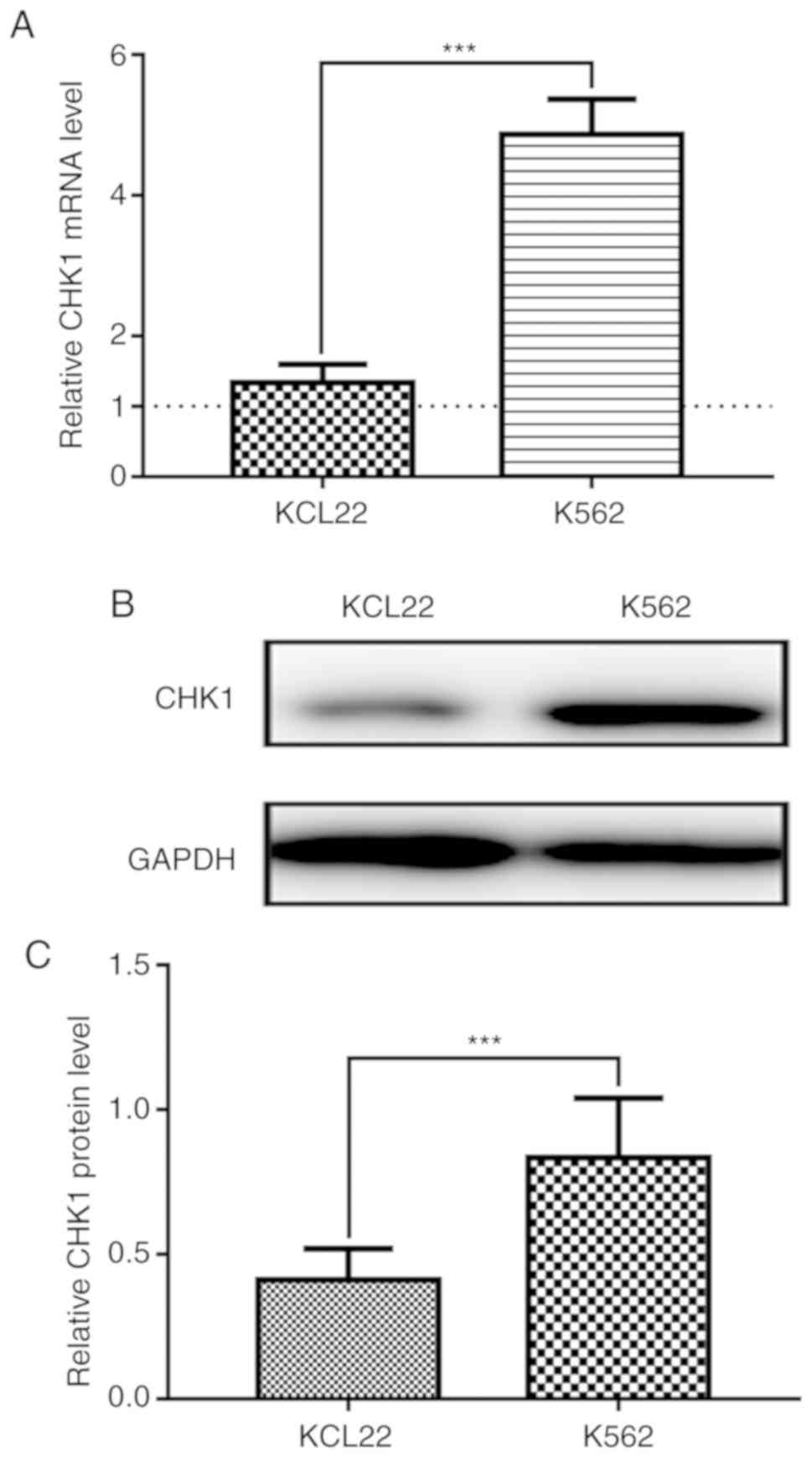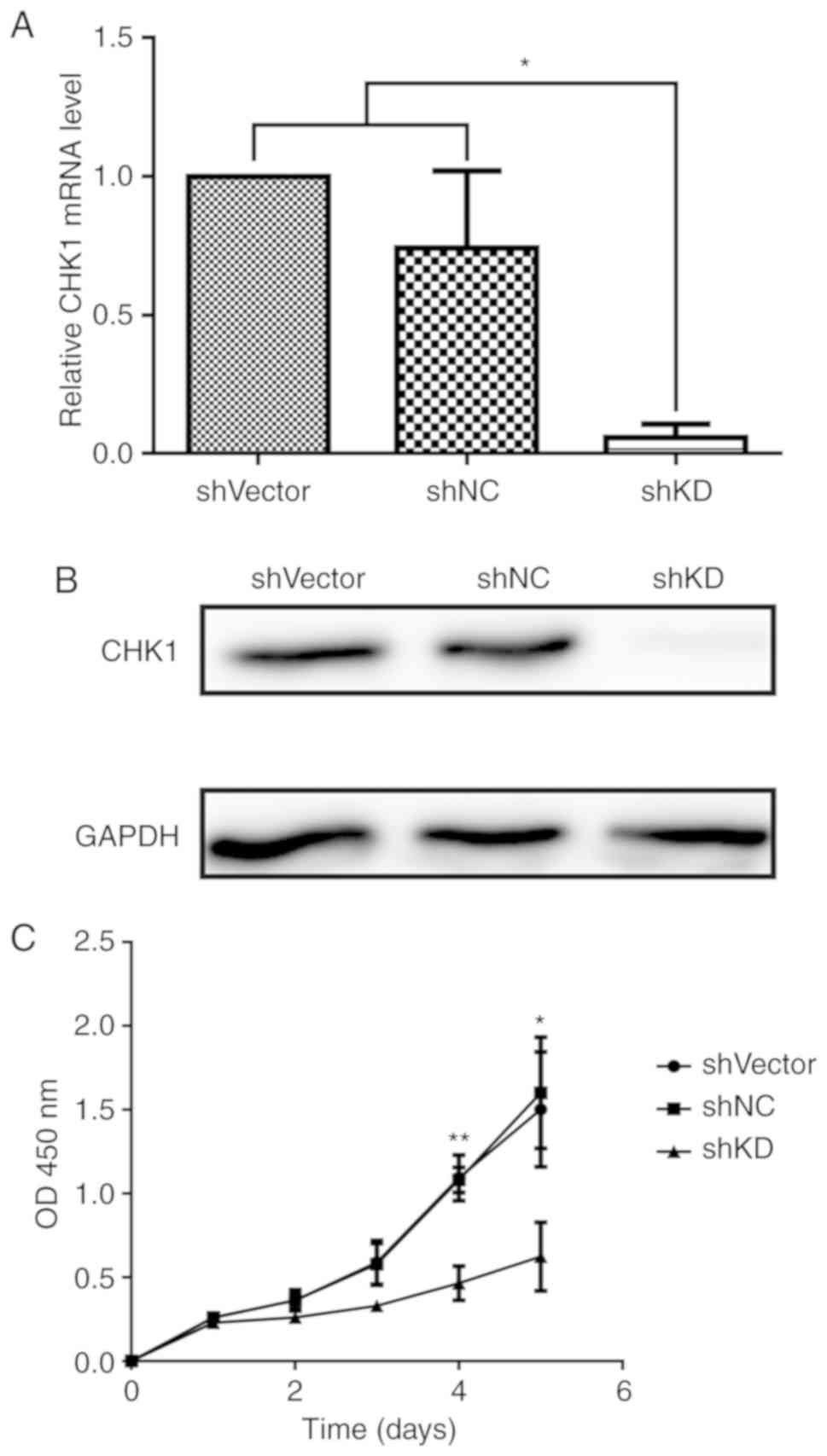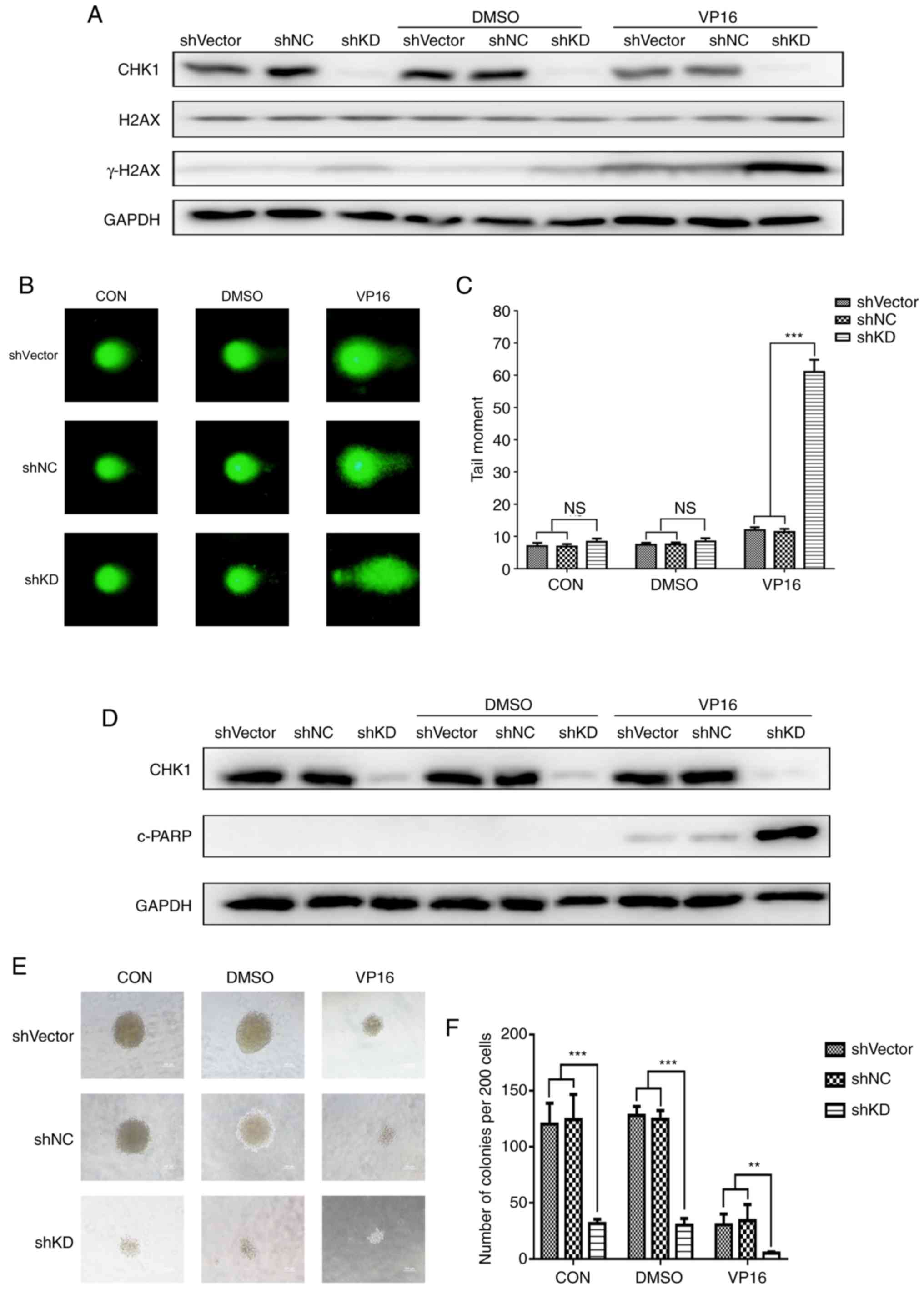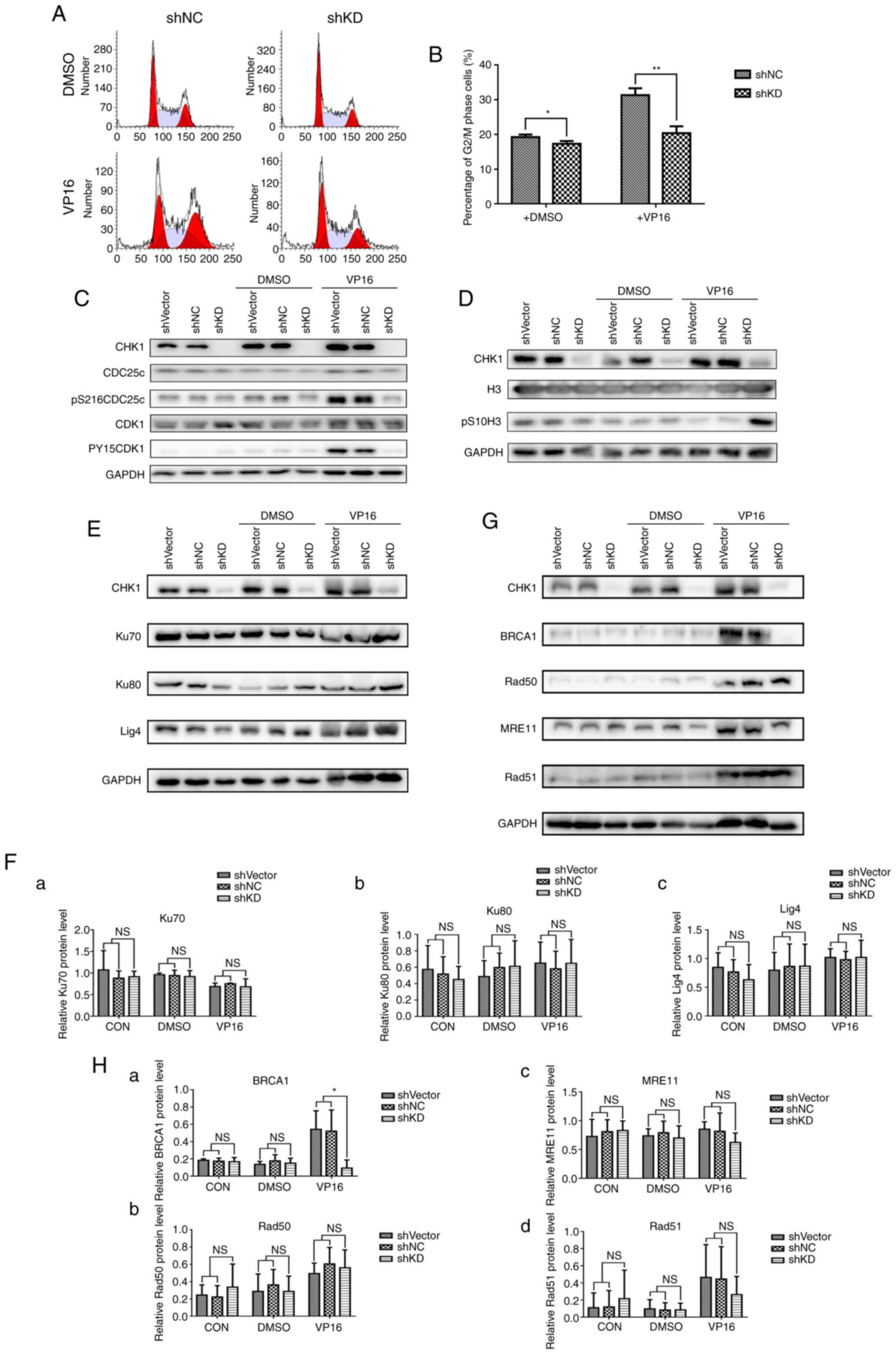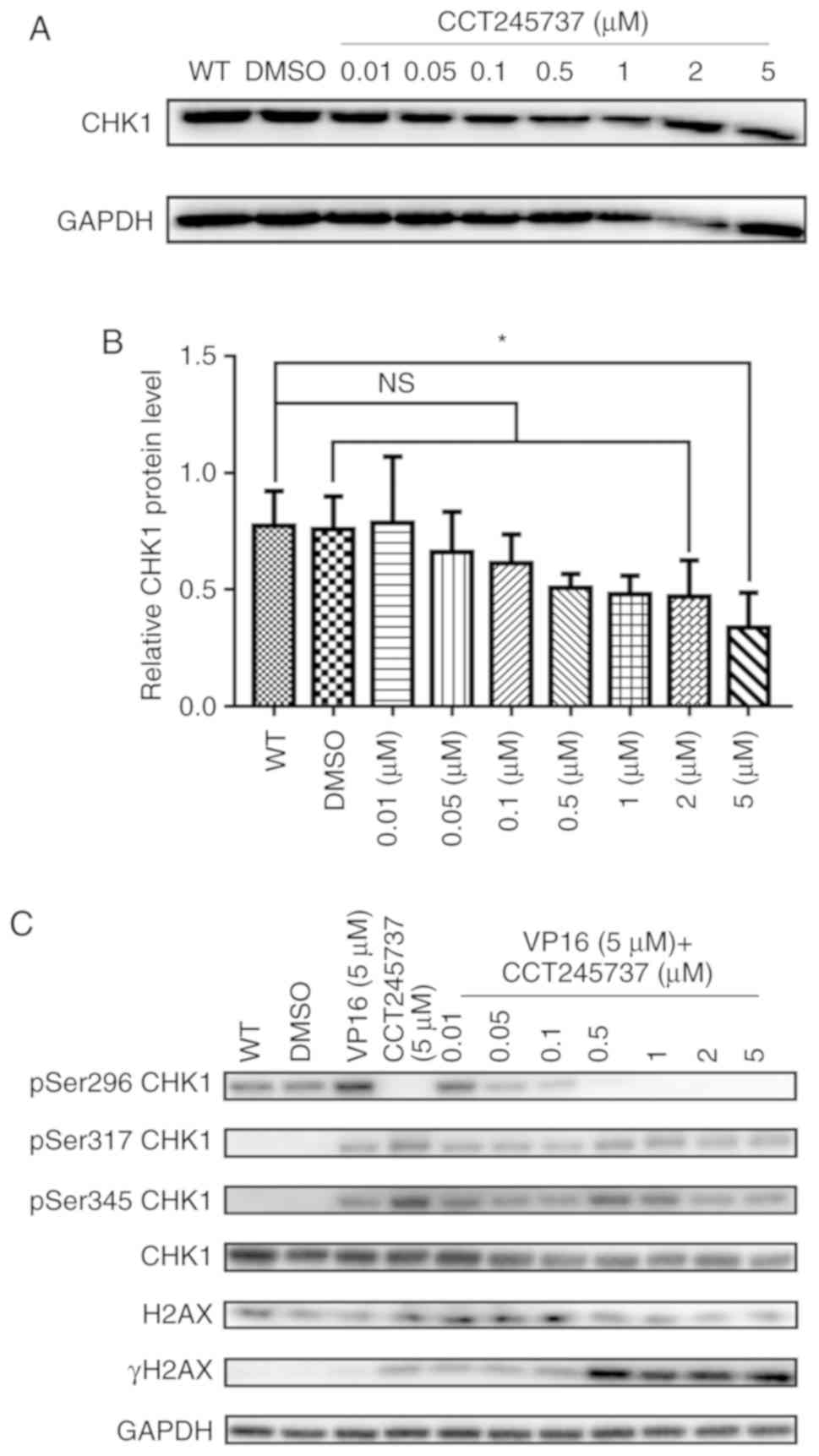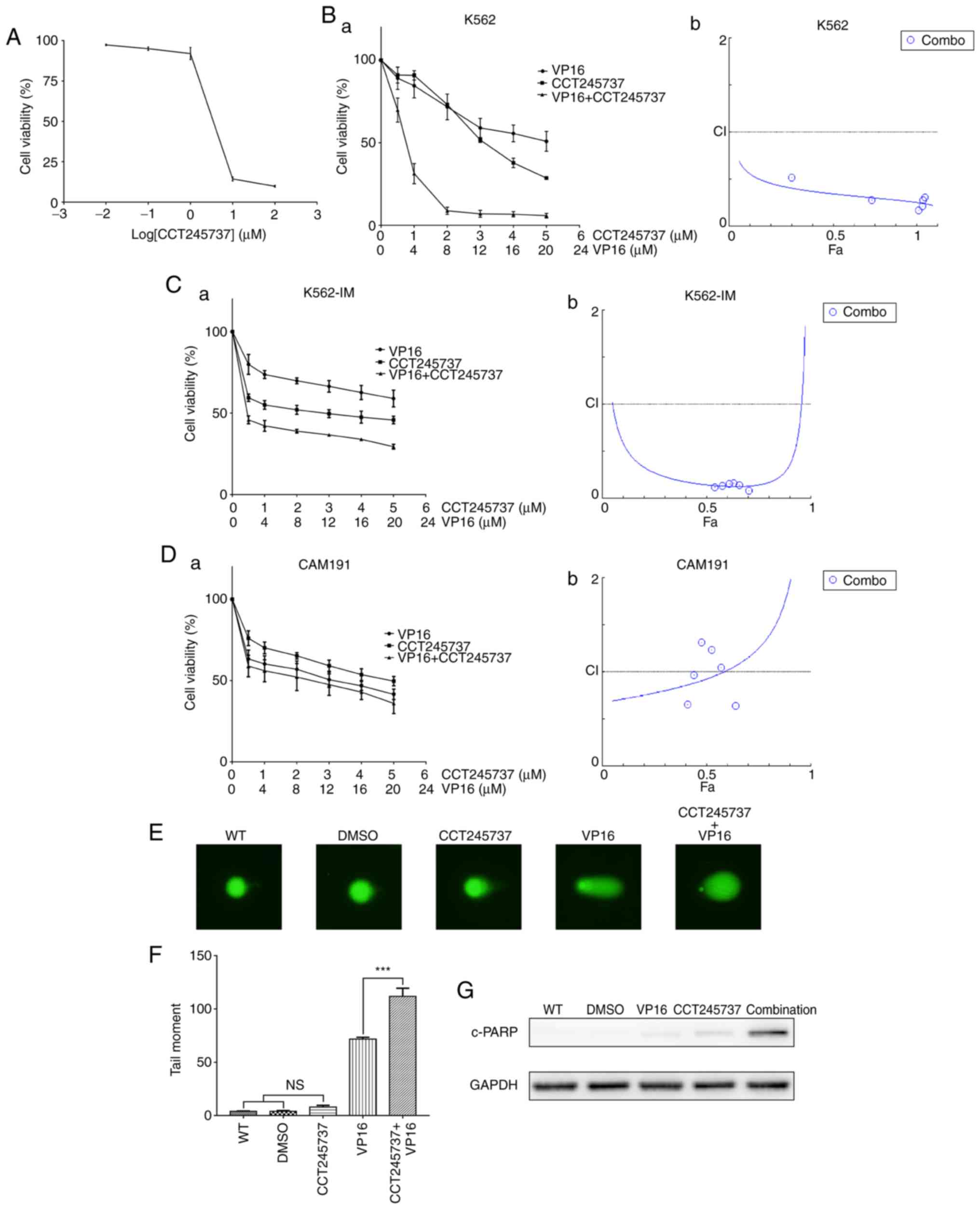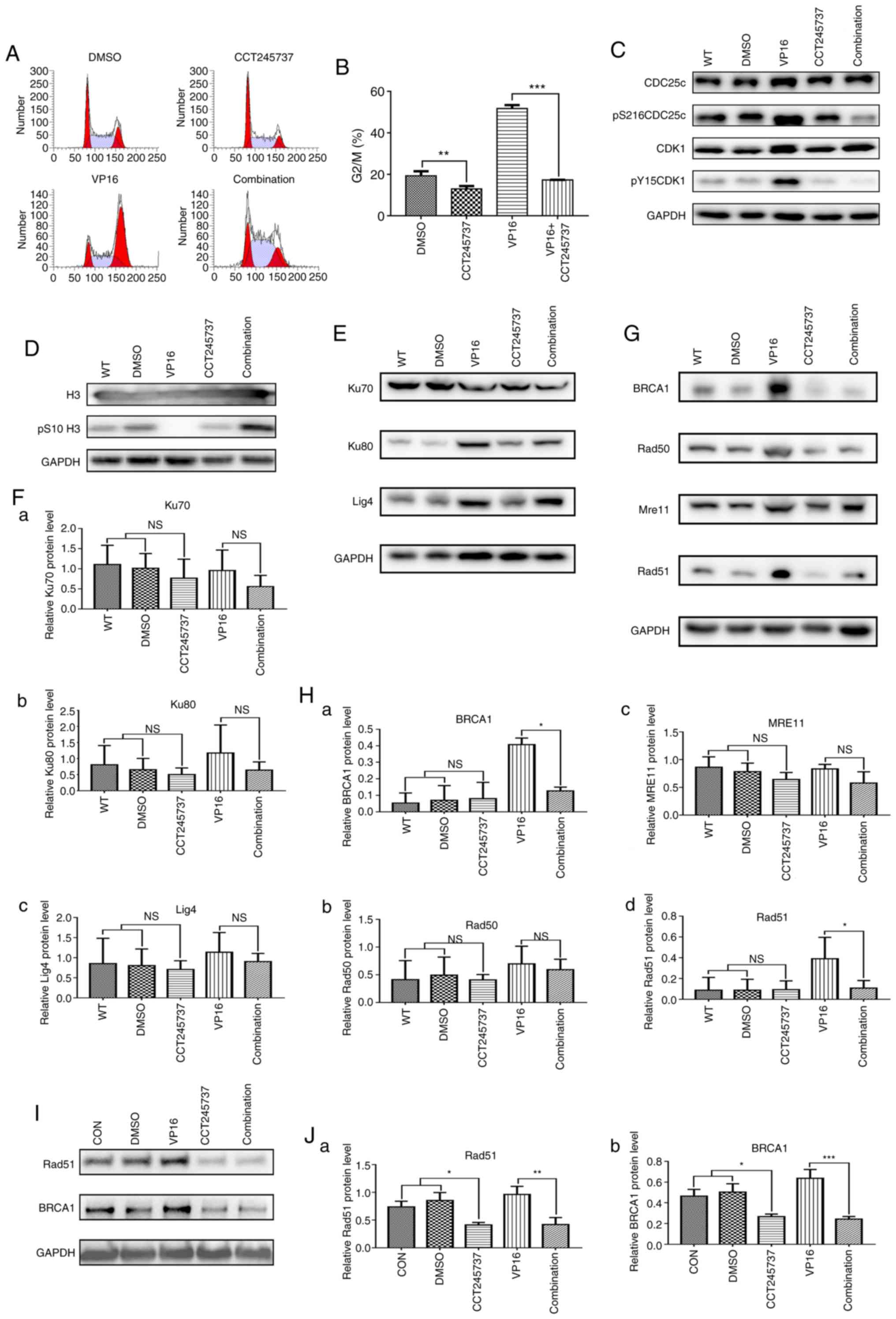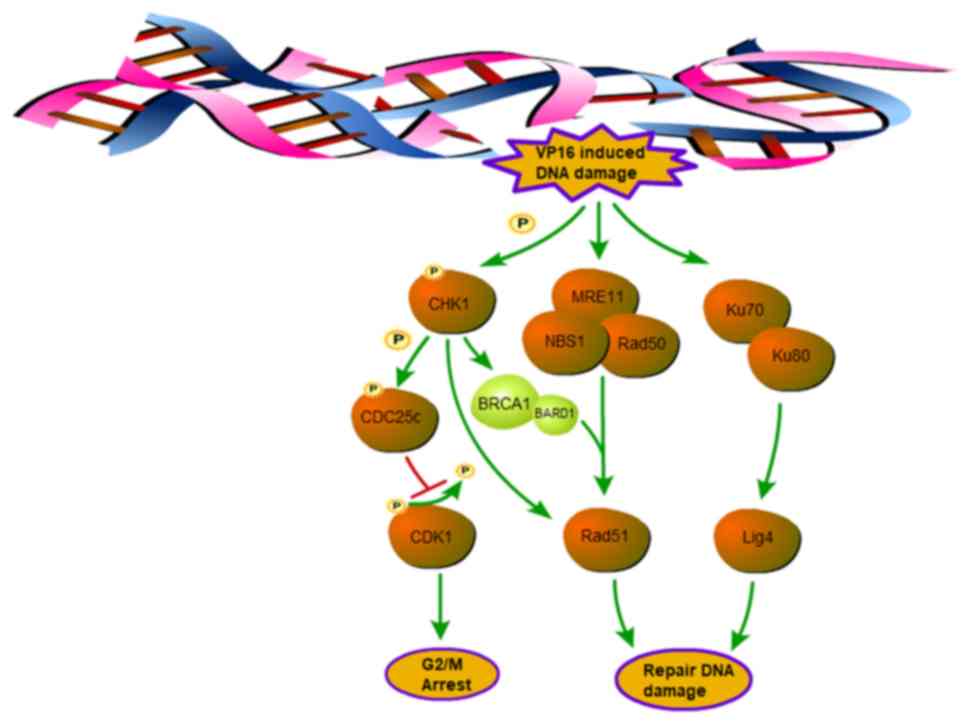|
1
|
Bhamidipati PK, Kantarjian H, Cortes J,
Cornelison AM and Jabbour E: Management of imatinib-resistant
patients with chronic myeloid leukemia. Ther Adv Hematol.
4:103–117. 2013. View Article : Google Scholar : PubMed/NCBI
|
|
2
|
Kaleem B, Shahab S, Ahmed N and Shamsi TS:
Chronic myeloid leukemia-prognostic value of mutations. Asian Pac J
Cancer Prev. 16:7415–7423. 2015. View Article : Google Scholar : PubMed/NCBI
|
|
3
|
Valent P, Hadzijusufovic E, Schernthaner
GH, Wolf D, Rea D and le Coutre P: Vascular safety issues in CML
patients treated with BCR/ABL1 kinase inhibitors. Blood.
125:901–906. 2015. View Article : Google Scholar : PubMed/NCBI
|
|
4
|
Experts in Chronic Myeloid Leukemia, . The
price of drugs for chronic myeloid leukemia (CML) is a reflection
of the unsustainable prices of cancer drugs: From the perspective
of a large group of CML experts. Blood. 121:4439–4442. 2013.
View Article : Google Scholar : PubMed/NCBI
|
|
5
|
Dillon MT, Good JS and Harrington KJ:
Selective targeting of the G2/M cell cycle checkpoint to
improve the therapeutic index of radiotherapy. Clin Oncol (R Coll
Radiol). 26:257–265. 2014. View Article : Google Scholar : PubMed/NCBI
|
|
6
|
Del Nagro CJ, Choi J, Xiao Y, Rangell L,
Mohan S, Pandita A, Zha J, Jackson PK and O'Brien T: Chk1
inhibition in p53-deficient cell lines drives rapid chromosome
fragmentation followed by caspase-independent cell death. Cell
Cycle. 13:303–314. 2014. View
Article : Google Scholar : PubMed/NCBI
|
|
7
|
Cimprich KA and Cortez D: ATR: An
essential regulator of genome integrity. Nat Rev Mol Cell Biol.
9:616–627. 2008. View
Article : Google Scholar : PubMed/NCBI
|
|
8
|
Yazinski SA and Zou L: Functions,
regulation, and therapeutic implications of the ATR checkpoint
pathway. Annu Rev Genet. 50:155–173. 2016. View Article : Google Scholar : PubMed/NCBI
|
|
9
|
Jazayeri A, Falck J, Lukas C, Bartek J,
Smith GC, Lukas J and Jackson SP: ATM- and cell cycledependent
regulation of ATR in response to DNA double-strand breaks. Nat Cell
Biol. 8:37–45. 2006. View
Article : Google Scholar : PubMed/NCBI
|
|
10
|
Sarmento LM, Póvoa V, Nascimento R, Real
G, Antunes I, Martins LR, Moita C, Alves PM, Abecasis M, Moita LF,
et al: CHK1 overexpression in T-cell acute lymphoblastic leukemia
is essential for proliferation and survival by preventing excessive
replication stress. Oncogene. 34:2978–2990. 2015. View Article : Google Scholar : PubMed/NCBI
|
|
11
|
Walworth N, Davey S and Beach D: Fission
yeast chk1 protein kinase links the rad checkpoint pathway to cdc2.
Nature. 363:368–371. 1993. View
Article : Google Scholar : PubMed/NCBI
|
|
12
|
Bartek J and Lukas J: Chk1 and Chk2
kinases in checkpoint control and cancer. Cancer Cell. 3:421–429.
2003. View Article : Google Scholar : PubMed/NCBI
|
|
13
|
Zhang Y and Hunter T: Roles of Chk1 in
cell biology and cancer therapy. Int J Cancer. 134:1013–1023. 2014.
View Article : Google Scholar : PubMed/NCBI
|
|
14
|
Patil M, Pabla N and Dong Z: Checkpoint
kinase 1 in DNA damage response and cell cycle regulation. Cell Mol
Life Sci. 70:4009–4021. 2013. View Article : Google Scholar : PubMed/NCBI
|
|
15
|
Maya-Mendoza A, Petermann E, Gillespie DA,
Caldecott KW and Jackson DA: Chk1 regulates the density of active
replication origins during the vertebrate S phase. EMBO J.
26:2719–2731. 2007. View Article : Google Scholar : PubMed/NCBI
|
|
16
|
Tang J, Erikson RL and Liu X: Checkpoint
kinase 1 (Chk1) is required for mitotic progression through
negative regulation of polo-like kinase 1 (Plk1). Proc Natl Acad
Sci USA. 103:11964–11969. 2006. View Article : Google Scholar : PubMed/NCBI
|
|
17
|
Sorensen CS, Hansen LT, Dziegielewski J,
Syljuåsen RG, Lundin C, Bartek J and Helleday T: The cell-cycle
checkpoint kinase Chk1 is required for mammalian homologous
recombination repair. Nat Cell Biol. 7:195–201. 2005. View Article : Google Scholar : PubMed/NCBI
|
|
18
|
Wang X, Kennedy RD, Ray K, Stuckert P,
Ellenberger T and D'Andrea AD: Chk1-mediated phosphorylation of
FANCE is required for the Fanconi anemia/BRCA pathway. Mol Cell
Biol. 27:3098–3108. 2007. View Article : Google Scholar : PubMed/NCBI
|
|
19
|
Walton MI, Eve PD, Hayes A, Valenti MR, De
Haven Brandon AK, Box G, Hallsworth A, Smith EL, Boxall KJ,
Lainchbury M, et al: CCT244747 is a novel potent and selective CHK1
inhibitor with oral efficacy alone and in combination with
genotoxic anticancer drugs. Clin Cancer Res. 18:5650–5661. 2012.
View Article : Google Scholar : PubMed/NCBI
|
|
20
|
Calvo E, Braiteh F, Von Hoff D, McWilliams
R, Becerra C, Galsky MD, Jameson G, Lin J, McKane S, Wickremsinhe
ER, et al: Phase I study of CHK1 inhibitor LY2603618 in combination
with gemcitabine in patients with solid tumors. Oncology.
91:251–260. 2016. View Article : Google Scholar : PubMed/NCBI
|
|
21
|
Laquente B, Lopez-Martin J, Richards D,
Illerhaus G, Chang DZ, Kim G, Stella P, Richel D, Szcylik C,
Cascinu S, et al: A phase II study to evaluate LY2603618 in
combination with gemcitabine in pancreatic cancer patients. BMC
Cancer. 17:1372017. View Article : Google Scholar : PubMed/NCBI
|
|
22
|
Yin Y, Shen Q, Zhang P, Tao R, Chang W, Li
R, Xie G, Liu W, Zhang L, Kapoor P, et al: Chk1 inhibition
potentiates the therapeutic efficacy of PARP inhibitor BMN673 in
gastric cancer. Am J Cancer Res. 7:473–483. 2017.PubMed/NCBI
|
|
23
|
Italiano A, Infante JR, Shapiro GI, Moore
KN, LoRusso PM, Hamilton E, Cousin S, Toulmonde M, Postel-Vinay S,
Tolaney S, et al: Phase I study of the checkpoint kinase 1
inhibitor GDC-0575 in combination with gemcitabine in patients with
refractory solid tumors. Ann Oncol. 29:1304–1311. 2018. View Article : Google Scholar : PubMed/NCBI
|
|
24
|
Restelli V, Lupi M, Vagni M, Chila R,
Bertoni F, Damia G and Carrassa L: Combining ibrutinib with Chk1
inhibitors synergistically targets mantle cell lymphoma cell lines.
Target Oncol. 13:235–245. 2018. View Article : Google Scholar : PubMed/NCBI
|
|
25
|
Booth L, Roberts J, Poklepovic A and Dent
P: The CHK1 inhibitor SRA737 synergizes with PARP1 inhibitors to
kill carcinoma cells. Cancer Biol Ther. 19:786–796. 2018.
View Article : Google Scholar : PubMed/NCBI
|
|
26
|
Walton MI, Eve PD, Hayes A, Henley AT,
Valenti MR, De Haven Brandon AK, Box G, Boxall KJ, Tall M, Swales
K, et al: The clinical development candidate CCT245737 is an orally
active CHK1 inhibitor with preclinical activity in RAS mutant NSCLC
and Emicro-MYC driven B-cell lymphoma. Oncotarget. 7:2329–2342.
2016. View Article : Google Scholar : PubMed/NCBI
|
|
27
|
Osborne JD, Matthews TP, McHardy T, Proisy
N, Cheung KM, Lainchbury M, Brown N, Walton MI, Eve PD, Boxall KJ,
et al: Multiparameter lead optimization to give an oral checkpoint
kinase 1 (CHK1) inhibitor clinical candidate:
(R)-5-((4-((Morpholin-2-ylmethyl)amino)-5-(trifluoromethyl)pyridin-2-yl)amino)pyr
azine-2-carbonitrile (CCT245737). J Med Chem. 59:5221–5237. 2016.
View Article : Google Scholar : PubMed/NCBI
|
|
28
|
Yang M, Tian X, Fan Z, Yu W, Li Z, Zhou J,
Zhang W and Liang A: Targeting RAD51 enhances chemosensitivity of
adult T-cell leukemia-lymphoma cells by reducing DNA double-strand
break repair. Oncol Rep. 42:2426–2434. 2019.PubMed/NCBI
|
|
29
|
Li L, Ye S, Yang M, Yu W, Fan Z, Zhang H,
Hu J, Liang A and Zhang W: SIRT1 downregulation enhances
chemosensitivity and survival of adult T-cell leukemia-lymphoma
cells by reducing DNA double-strand repair. Oncol Rep.
34:2935–2942. 2015. View Article : Google Scholar : PubMed/NCBI
|
|
30
|
Livak KJ and Schmittgen TD: Analysis of
relative gene expression data using real-time quantitative PCR and
the 2(-Delta Delta C(T)) method. Methods. 25:402–408. 2001.
View Article : Google Scholar : PubMed/NCBI
|
|
31
|
Chou TC: Theoretical basis, experimental
design, and computerized simulation of synergism and antagonism in
drug combination studies. Pharmacol Rev. 58:621–681. 2006.
View Article : Google Scholar : PubMed/NCBI
|
|
32
|
Tirrò E, Massimino M, Romano C, Pennisi
MS, Stella S, Vitale SR, Fidilio A, Manzella L, Parrinello NL,
Stagno F, et al: Chk1 inhibition restores inotuzumab ozogamicin
citotoxicity in CD22-positive cells expressing mutant p53. Front
Oncol. 9:572019. View Article : Google Scholar : PubMed/NCBI
|
|
33
|
Parsels LA, Qian Y, Tanska DM, Gross M,
Zhao L, Hassan MC, Arumugarajah S, Parsels JD, Hylander-Gans L,
Simeone DM, et al: Assessment of chk1 phosphorylation as a
pharmacodynamic biomarker of chk1 inhibition. Clin Cancer Res.
17:3706–3715. 2011. View Article : Google Scholar : PubMed/NCBI
|
|
34
|
Morimoto S, Tsuda M, Bunch H, Sasanuma H,
Austin C and Takeda S: Type II DNA topoisomerases cause spontaneous
double-strand breaks in genomic DNA. Genes (Basel). 10:8682019.
View Article : Google Scholar
|
|
35
|
Schonn I, Hennesen J and Dartsch DC:
Cellular responses to etoposide: Cell death despite cell cycle
arrest and repair of DNA damage. Apoptosis. 15:162–172. 2010.
View Article : Google Scholar : PubMed/NCBI
|
|
36
|
Shibata A and Jeggo PA: DNA double-strand
break repair in a cellular context. Clin Oncol (R Coll Radiol).
26:243–249. 2014. View Article : Google Scholar : PubMed/NCBI
|
|
37
|
Chang HHY, Pannunzio NR, Adachi N and
Lieber MR: Non-homologous DNA end joining and alternative pathways
to double-strand break repair. Nat Rev Mol Cell Biol. 18:495–506.
2017. View Article : Google Scholar : PubMed/NCBI
|
|
38
|
Savage KI, Gorski JJ, Barros EM, Irwin GW,
Manti L, Powell AJ, Pellagatti A, Lukashchuk N, McCance DJ,
McCluggage WG, et al: Identification of a BRCA1-mRNA splicing
complex required for efficient DNA repair and maintenance of
genomic stability. Mol Cell. 54:445–459. 2014. View Article : Google Scholar : PubMed/NCBI
|
|
39
|
Roy R, Chun J and Powell SN: BRCA1 and
BRCA2: Different roles in a common pathway of genome protection.
Nat Rev Cancer. 12:68–78. 2011. View Article : Google Scholar : PubMed/NCBI
|
|
40
|
Moynahan ME, Chiu JW, Koller BH and Jasin
M: Brca1 controls homology-directed DNA repair. Mol Cell.
4:511–518. 1999. View Article : Google Scholar : PubMed/NCBI
|
|
41
|
Caestecker KW and Van de Walle GR: The
role of BRCA1 in DNA double-strand repair: Past and present. Exp
Cell Res. 319:575–587. 2013. View Article : Google Scholar : PubMed/NCBI
|
|
42
|
Wu LC, Wang ZW, Tsan JT, Spillman MA,
Phung A, Xu XL, Yang MC, Hwang LY, Bowcock AM and Baer R:
Identification of a RING protein that can interact in vivo with the
BRCA1 gene product. Nat Genet. 14:430–440. 1996. View Article : Google Scholar : PubMed/NCBI
|
|
43
|
Scully R, Chen J, Plug A, Xiao Y, Weaver
D, Feunteun J, Ashley T and Livingston DM: Association of BRCA1
with Rad51 in mitotic and meiotic cells. Cell. 88:265–275. 1997.
View Article : Google Scholar : PubMed/NCBI
|
|
44
|
Zhao W, Steinfeld JB, Liang F, Chen X,
Maranon DG, Jian Ma C, Kwon Y, Rao T, Wang W, Sheng C, et al:
BRCA1-BARD1 promotes RAD51-mediated homologous DNA pairing. Nature.
550:360–365. 2017. View Article : Google Scholar : PubMed/NCBI
|
|
45
|
Mani C, Jonnalagadda S, Lingareddy J,
Awasthi S, Gmeiner WH and Palle K: Prexasertib treatment induces
homologous recombination deficiency and synergizes with olaparib in
triple-negative breast cancer cells. Breast Cancer Res. 21:1042019.
View Article : Google Scholar : PubMed/NCBI
|
|
46
|
Lei H, Jin J, Liu M, Li X, Luo H, Yang L,
Xu H and Wu Y: Chk1 inhibitors overcome imatinib resistance in
chronic myeloid leukemia cells. Leukemia Res. 64:17–23. 2018.
View Article : Google Scholar
|















